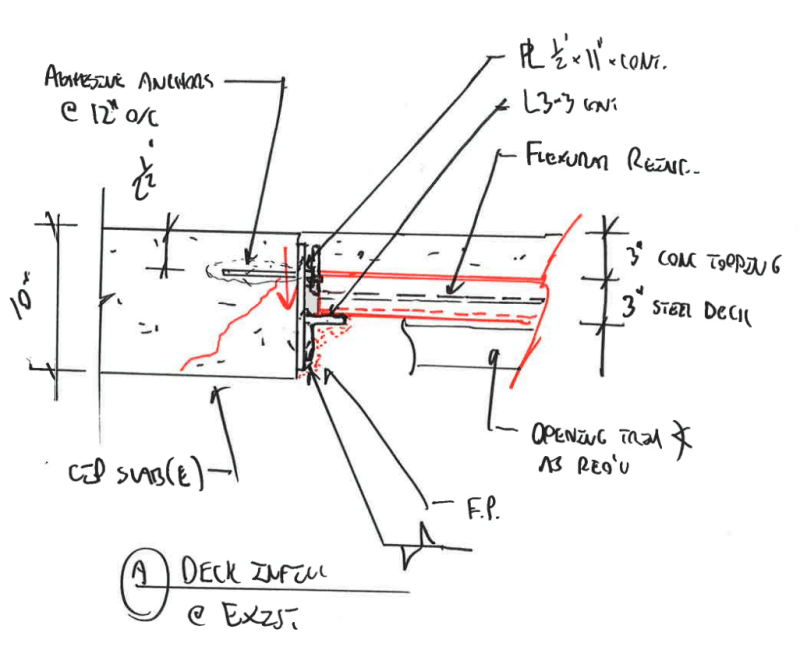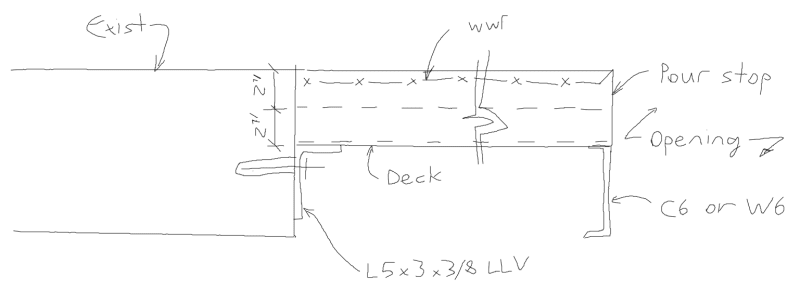How would we reduce up an existing opening in a 10" thick flat 2 way slab? I'm going form about 8x12 down to a 4x3.
My ideas are:
1. Epoxy anchor angles into 2 sides of the opening then drop in form deck with rebar and concrete, epoxy doweling the rebar into the edges of existing.
2. Dowel rebar into edges and do traditional shoring and forming.
Method 1 is preferred for speed of completion because this is multiple openings on top of each other, think a defunct stair opening over multiple floors.
My ideas are:
1. Epoxy anchor angles into 2 sides of the opening then drop in form deck with rebar and concrete, epoxy doweling the rebar into the edges of existing.
2. Dowel rebar into edges and do traditional shoring and forming.
Method 1 is preferred for speed of completion because this is multiple openings on top of each other, think a defunct stair opening over multiple floors.


